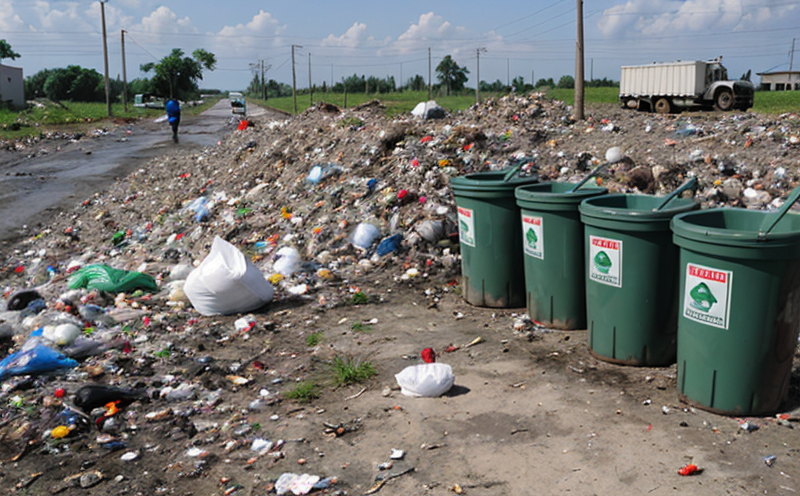ASTM D5231 Characterization of Municipal Solid Waste Test
The ASTM D5231 test method is a comprehensive approach to characterizing municipal solid waste (MSW), providing detailed information about its composition, calorific value, and other critical parameters. This test is essential for quality managers, compliance officers, R&D engineers, and procurement teams involved in managing or processing MSW.
The ASTM D5231 standard involves several steps to ensure accurate characterization of the waste stream. Initially, a representative sample of the waste is collected from various sources within a municipal facility. This ensures that the sample reflects the diversity and quantity of materials being handled by the facility. The next step is the preparation of this sample in accordance with ASTM guidelines.
Following proper preparation, the test proceeds to determine the calorific value (CV) of the waste using an oxygen bomb calorimeter. This instrument measures the heat released when a known mass of waste is burned under controlled conditions. The CV is critical for understanding how much energy can be extracted from the waste, which in turn influences its potential as a fuel source.
The test also analyzes the ash content and mineral composition of the waste using X-ray fluorescence (XRF) spectrometers. This helps identify any hazardous materials or valuable minerals that could be recovered through recycling processes. Additionally, the moisture content is measured to assess how much drying might be required before further processing.
Another important aspect of ASTM D5231 is the determination of particle size distribution using sieving techniques. Understanding this characteristic allows for better planning of downstream operations such as sorting and composting. Finally, the test evaluates organic matter content by measuring volatile solids at high temperatures (approximately 500°C), which provides insights into biodegradability.
By thoroughly characterizing municipal solid waste through ASTM D5231, facilities can make informed decisions about how best to manage their waste streams. Whether it's for recycling initiatives, energy recovery projects, or landfill management strategies, accurate data provided by this test ensures compliance with regulatory requirements and supports sustainable practices.
Environmental and Sustainability Contributions
- Reduces landfill space: By optimizing waste composition through characterization, less material ends up in landfills.
- Saves resources: Identifying valuable materials enables their recovery rather than disposal.
- Promotes recycling: Detailed information helps facilities design effective sorting systems for recyclable components.
- Supports renewable energy: Accurate calorific value assessments enhance the viability of waste-to-energy programs.
Why It Matters
The importance of ASTM D5231 cannot be overstated in today’s context where environmental concerns are paramount. As cities around the world grapple with increasing amounts of waste, efficient management is crucial not only for operational efficiency but also for ecological sustainability.
Accurate characterization provided by this test method ensures that waste treatment processes operate at optimal levels. This leads to reduced costs associated with unnecessary disposal methods and increased use of sustainable alternatives like recycling and energy recovery. Moreover, compliance with local regulations becomes more straightforward when precise data is available.
In terms of research & development (R&D), ASTM D5231 offers valuable insights that can drive innovation in waste management technologies. For example, understanding the calorific value allows for better design of combustion chambers in incinerators or gasifiers used in energy production from waste.
For procurement departments responsible for sourcing raw materials and feedstocks, knowing exactly what goes into a facility’s waste stream can reveal opportunities to source alternative inputs locally. This not only reduces transportation costs but also supports local economies by promoting circular economy principles.





